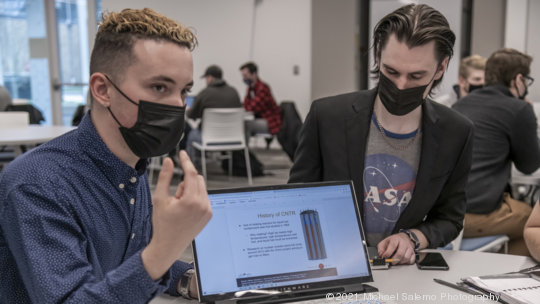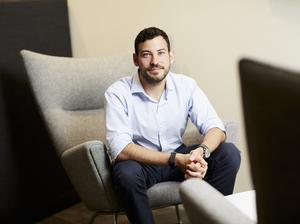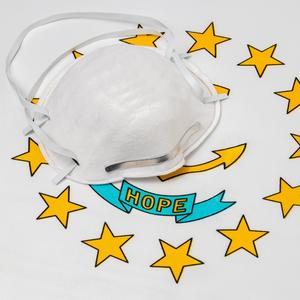
The 300 million-mile trip to Mars is about to get a lot quicker.
A new NASA project, with participation from students at the University of Rhode Island, is trying to cut the typical seven-to-nine-month travel time to the red planet in half.
The project aims to introduce the mechanics of nuclear propulsion technology to space travel. The technology would use nuclear fission to propel rockets. In addition to using less fuel, nuclear propulsion could reduce travel time by half when compared with the current method of chemical propulsion.
Nuclear propulsion was first explored in the 1960s by the Air Force. After funding dried up for a federal research program in the early 1970s, the private sector took the lead in development until the late 1980s, said Bahram Nassersharif, URI's nuclear engineering program director.
At that time, the technology saw renewed interest sparked by the Reagan administration’s anti-ballistic missile program. Nassersharif joined the White House to work on its development. He said the administration saw nuclear propulsion as a stepping stone to establishing a presence on the moon.
Today, Nassersharif is leading the next generation of scientists and students as they try to unravel some of the hardest technical challenges with nuclear propulsion. At URI, Nassersharif is guiding three sets of student teams to figure out how to safely spin the molten uranium that acts as fuel.
Joining them are staff and students from MIT, Pennsylvania State University, the University of Michigan and the University of Alabama, Huntsville.
“First off, no one has ever figured out how to spin molten uranium before,” Nassersharif said. “When you add in that, the system will have to be installed into a spacecraft. It’s another technical hurdle to overcome. Then you have to consider the system has to survive temperatures of more than 5,000 degrees [Fahrenheit].”
Uranium melts at a temperature of 2,070 degrees Fahrenheit, so students also need to figure out how to get the tubes to spin so the liquid uranium stays molten and attached to the walls of the tubes.
One URI team will be working on how to get the fuel tubes spinning, possibly by using an electric motor or using hydrogen in a turbine, Nassersharif said. The next team will focus on the tubes’ normal operation during the flight, including increasing and decreasing speeds. The goal is to keep the tubes spinning synchronously, starting at around 250 revolutions per minute to several thousand per minute, he said.
The final team will develop a plastic 3D desktop model of the system to see how it all fits together. The project started last fall and will conclude in the spring with a final design showcase and a working model.
“I thought this might just be a small project but the interest has been overwhelming,” Nassersharif said.








